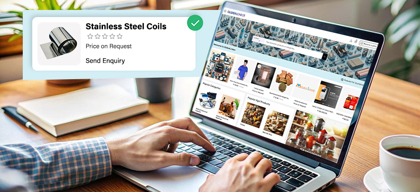7 Worst Health Tips for the Busy Executive

Health & Lifestyle
478 week ago — 7 min read
Deep sea divers, who get disoriented during dives, confuse down for up – an error that can be fatal. To avoid this, divers watch the air bubbles to see which way is up.
At a certain point in their career, business executives may feel the need to take better care of their health. They rely on the internet to address this need. Unfortunately, they get disoriented in the sea of information and confuse down for up, and make potentially dangerous choices. Let’s take a look at some of these myths.
Myth #1: You can catch up on your sleep during the weekends.
In today’s corporate world, many people believe that being the first one in and the last one out is the mark of a good employee. Consequently, they have little time for restful sleep during weekdays, and they hope to make up for it during weekends. However, the body works on a daily renewal cycle, not a weekly one. Thus, sleeping till 11 am on weekends does not make up for all the sleep lost during the weekdays.
Solution: Instead of the habitual 6-7 hours of monophasic sleep at night, consider a polyphasic sleep routines in which multiple sleep-wake cycles occur each day. Polyphasic sleep prevents sleep debt from accumulating, improves performance, and reduces the amount of sleep required. Also, taking courses on time management and productivity enhancement will teach how to free up some time for rest.
Myth #2: Low ‘X’ diet can help you lose weight.
Talks of many diet routines are common in the office. Each endorses why low this or low that is good for weight loss. Historically many such diet schemes have risen and fallen in popularity. But, what’s popular needn’t be proper. Therefore, always take any low ‘x’ diet with a pinch of salt. Even if it tells you to avoid salt. Instead, understand that weight gain is a result of an imbalance in nutritional intake. If the imbalance is corrected, weight loss will follow.
Solution: Create a food journal and record the food items consumed each day. After journaling for a month, consult a nutritionist to remove any imbalances in the diet.
Myth #3: Exercise for at least 30 minutes a day if you want visible results.
This is a very dangerous myth because it makes it very easy to come up with legitimate excuses. If taken out of context, half an hour is not a lot of time. Nevertheless, for an executive who juggles many priorities, 30 minutes is a lot of time. If the myth has them convinced, they may never see the point in exercising.
Solution: Any effort expended in exercising the body is not effort wasted. The results of exercising for ten minutes, three times a day, will definitely reflect positively.
Myth #4: Detox routines can counteract the negative influence of neglectful living.
Detoxing regimens can complement a healthy lifestyle, but never substitute it. Yearly detox retreats that executives go on to detox themselves in itself is not an unhealthy practice. What is unhealthy is that many consider these regimens as a licence to be careless about their health. Detoxing the body is not like emptying the recycle bin on the PC. Accumulated effects of deleterious toxins cannot be swept away in one go.
Solution: There is no quick fix remedy that can completely negate the effects of negligent living. Avoid exposure to toxins as much as possible by being mindful of the food that goes into the body. Learn where the food comes from and what it offers nutritionally. Seek less toxic substitutes for foods consumed on a large scale.
Myth #5: Artificial sweeteners are good to go.
Ever since the controversy, both sides are credited with victorious battles, but, a clear winner has not yet emerged. Even though the labs have successfully synthesized artificial equivalents of natural compounds, the problem is that the human body does not assimilate those artificial compounds as efficiently as it assimilates natural compounds.
Solution: Don’t take sides in the natural vs artificial debate. If possible, stay out of it completely and stop using artificial sweeteners. Even so, bear in mind that consumption of processed sugar must be limited.
Myth #6: You can get all the vitamins and minerals you need from supplements.
There is an increasing reliance on diet supplements to meet nutritional requirements. This trend may become very dangerous if left unchecked. Presently, supplements have become necessary because the nutritional content of the food items is decreasing. But, it can never be and should never be a substitute for regular meals.
Solution: The food journal, mentioned in the second myth, allows a nutritionist to accurately gauge the shortfall in the intake of vitamin, minerals, and other trace elements. Based on the observations, the expert can recommend the required supplements.
Myth #7: You shouldn’t wait till you get thirsty to drink water.
Pre-emptive moves may be necessary to safeguard commercial interests, but drinking water before feeling thirsty isn’t really a good idea. Rules of thumb, such as 1L per kg of body weight, are a good indicator for those who are not consistent with drinking water, even when thirsty. Listen to what the body says.
Solution: Respond to thirst. Drink a small quantity of water and wait. If the thirst remains, drink a little more and wait. Repeat the cycle till the thirst is satiated.
The busy executive must reject these false beliefs in order to live a healthy life. Despite huge work related demands, these tips will serve as bubbles and point the way up: get the daily quota of rest, track the food intake and get diet recommendations from nutrition experts, exercise as much as practical, and listen to the body. After all, what is the point in reaching the top without the health and vitality to enjoy the success?
Posted by
Karen AroneyAn accredited nutritionist, specializing in nutrition and better health for children, adults, time-poor professionals, and organizations. I use client-centric approach to enabling...
Network with SMEs mentioned in this article
View Karen 's profile
Other articles written by Karen Aroney
Top 8 Overrated 'Healthy Foods'
470 week ago
5 Don'ts When it Comes to Your Nutrition
471 week ago
Most read this week













Comments (1)
Share this content
Please login or Register to join the discussion